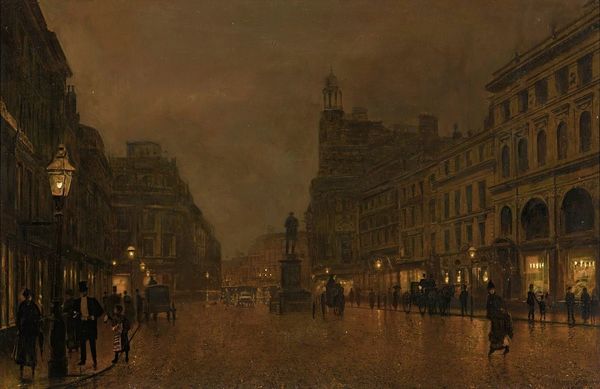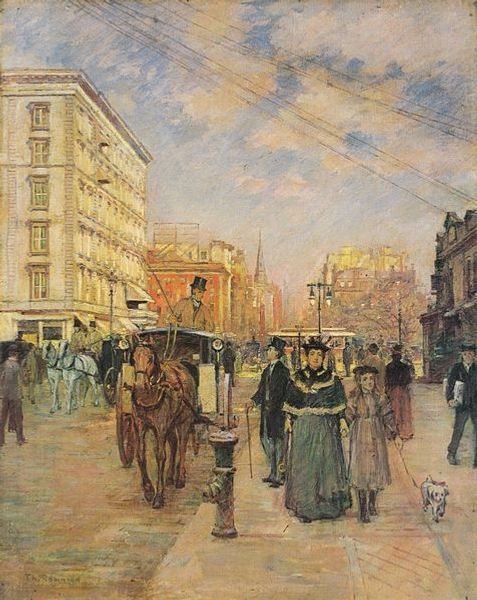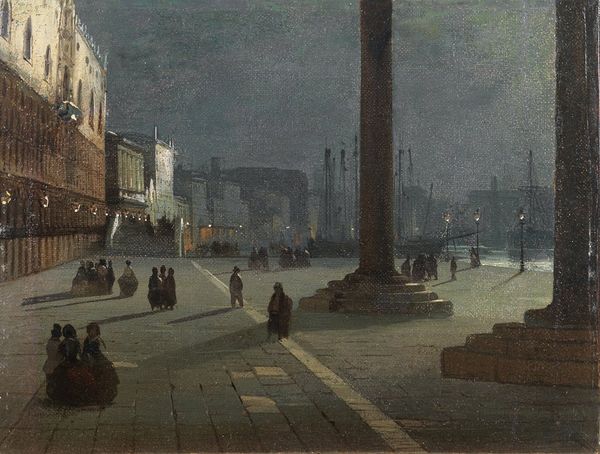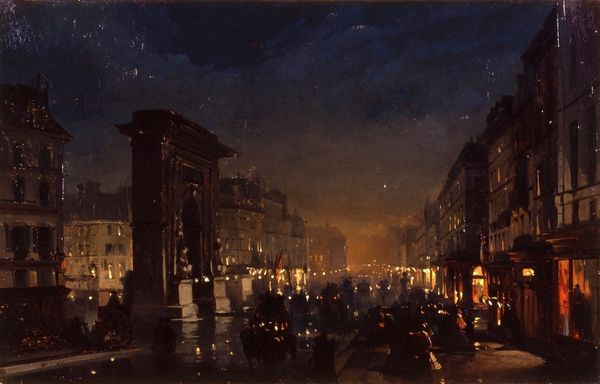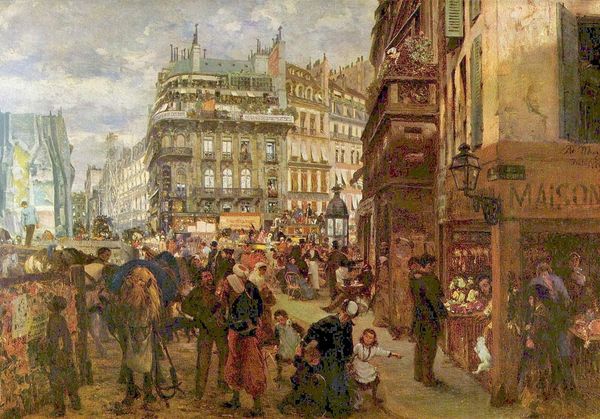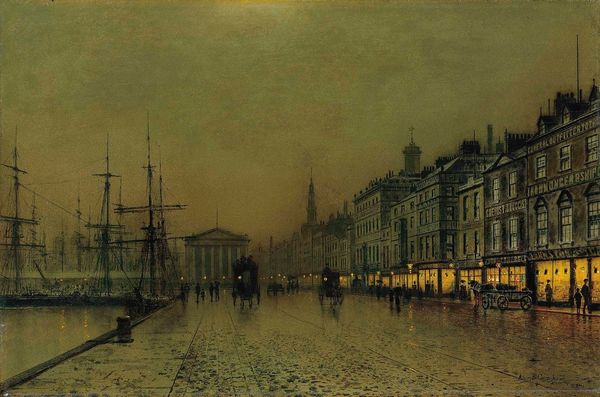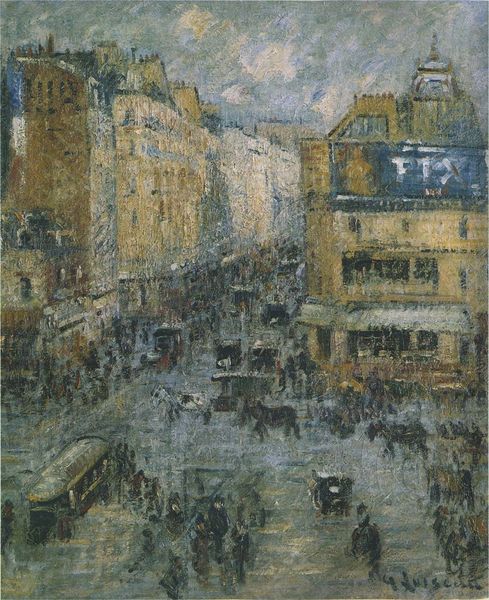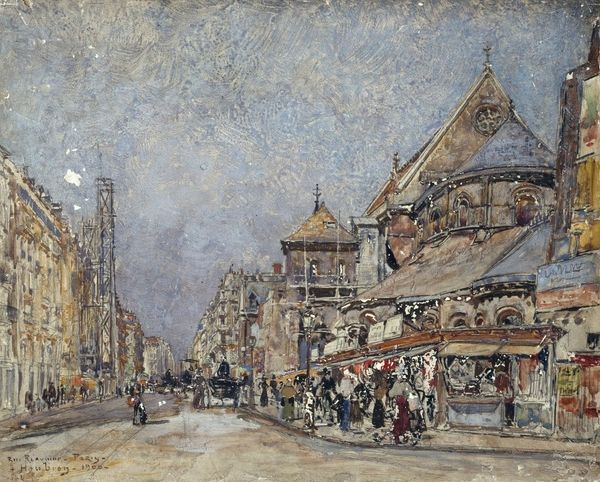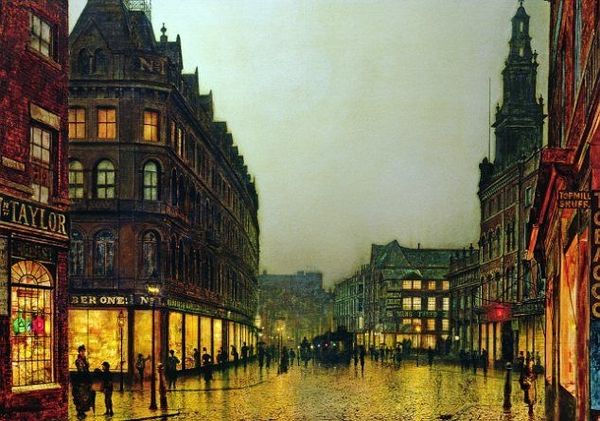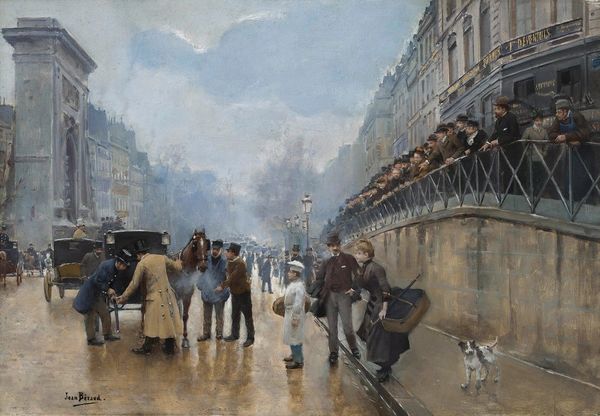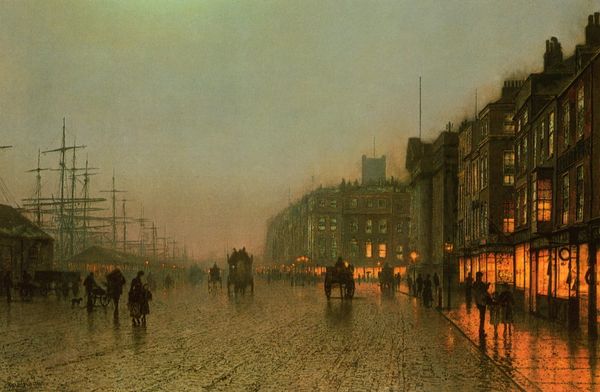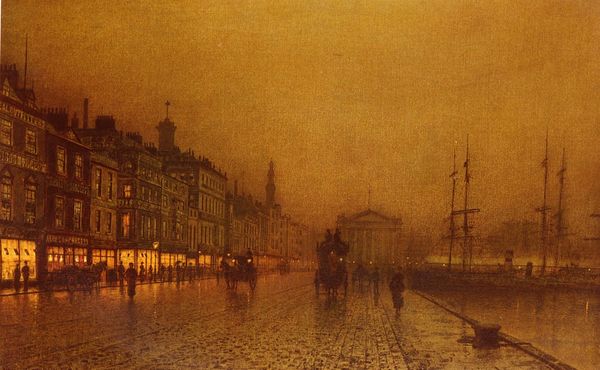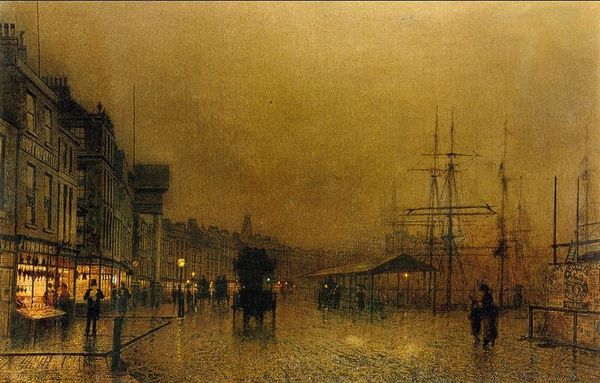
Copyright: Public domain
Curator: William Orpen's oil painting, Regent Street, dating from around 1910, presents a London bathed in the dusky glow of early electric light. What are your immediate impressions? Editor: My immediate impression is that of a city shrouded in memory. The monochromatic palette feels almost sepia-toned, imbuing the modern setting with a wistful nostalgia. There’s something archetypal about cityscapes, labyrinths of humanity—Orpen captured that eternal quality. Curator: Exactly! Orpen wasn't interested in topographical precision. Look at the way he renders the architecture—it's suggestive rather than exact, all blurry and golden. I sense a mood more than a depiction. The electric lights become symbolic rather than functional. Don't you feel he's hinting at the future while deeply entrenched in the past? Editor: I concur entirely! The lighting creates a fascinating interplay of symbols. The emerging electric light pushes against the symbolic darkness—a new technological dawn arriving in the heart of empire. Notice how he places them like distant stars? It is not simply illuminating but evokes feelings of wonder, progress, and potential transformation. What do you think of the subjects he’s chosen? Curator: Mostly obscured, blurry. More suggestion than reality again. Anonymous figures, ghostly carriages—they populate a liminal space. Regent Street then becomes a stage for something far deeper than daily life. One might imagine they represent anyone and everyone, lost to memory as the age rolls forward. Editor: The horse-drawn carriages become powerful reminders too—on the cusp of obsolescence as technology progresses! There is so much depth in this painting. I also like how the curve of Regent Street pulls you in but still hides things from the viewer. Curator: A city promising answers, but keeping some secrets. Editor: Exactly. A beguiling portrait of transition and memory. It resonates deeply.
Comments
No comments
Be the first to comment and join the conversation on the ultimate creative platform.
